
You may not want to read about this frightening creature if you suffer to any degree from ophidiophobia, or even if you are about to embark on a camping trip. Titanoboa fossils show it was the largest snake in the world. It lived during the Paleocene epoch, about 60 million years ago, so you are safe from its bone crushing grip now, but the image of the huge prehistoric snake slithering around South America is still a terrifying one.
So far, the South American country of Colombia has the only known fossils of the huge serpent. It is through these few fossils that paleontologists were able to estimate the size of this prehistoric creature. This estimation was then used to create a life-size model of Titanoboa, which was exhibited in 2012 in New York City’s Grand Central Terminal as a promotion for the Smithsonian Channel documentary entitled Titanoboa: Monster Snake.
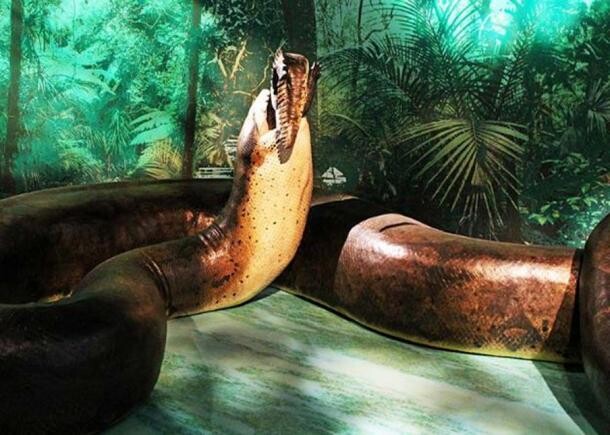
The “Titanoboa: Monster Snake” exhibit from the Smithsonian at the Natural History Museum. (Ryan Quick/ CC BY 2.0 )
A Titanic Boa
Titanoboa simply means ‘titanic boa’ and is an apt name for this prehistoric snake. According to estimates made by paleontologists, it could have grown to a length of between 42 feet and 49 feet (between 12.8 meters and 14.9 meters) and weighed up to a massive 2500 pounds (1134 kg). In addition, the thickest part of the snake’s body is reckoned to have had a diameter of 3 feet (0.9 meters).
As a comparison, the anaconda, one of the largest snakes today, is known to reach lengths of over 20 feet (6.1 meters) and weigh more than 500 pounds (227 kg). Titanoboa was obviously a giant compared to the largest snakes we have today.
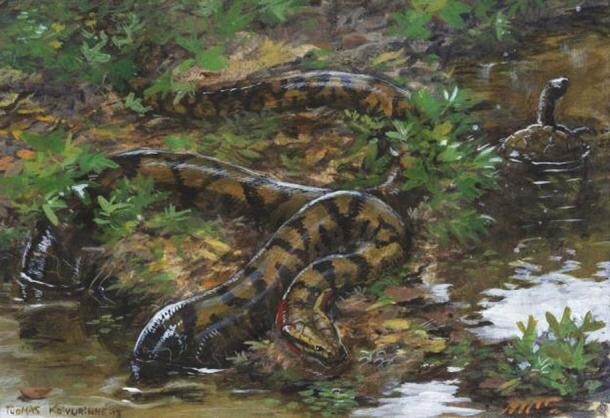
Artistic representation of Titanoboa. (tuomaskoivurinne/ Deviant Art)
Discovering Titanoboa
The discovery of Titanoboa was made during the first decade of the 21st century in Cerrejón, a coal mine in the northern part of Colombia. The campaign that led to the discovery began in 1994, when the Colombian geologist Henry Garcia found an unfamiliar fossil which he labelled as ‘Petrified Branch’ and placed it in a display case of the coal company.
In 2003, a Colombian undergraduate geology student by the name of Fabiany Herrera was at Cerrejón for a field trip when he discovered fossilized plant remains . As the area had not been explored previously by paleontologists, an expedition was soon organized. One of the researchers invited to join the expedition was Scott Wing, the curator of fossil plants at the Smithsonian’s National Museum of Natural History.
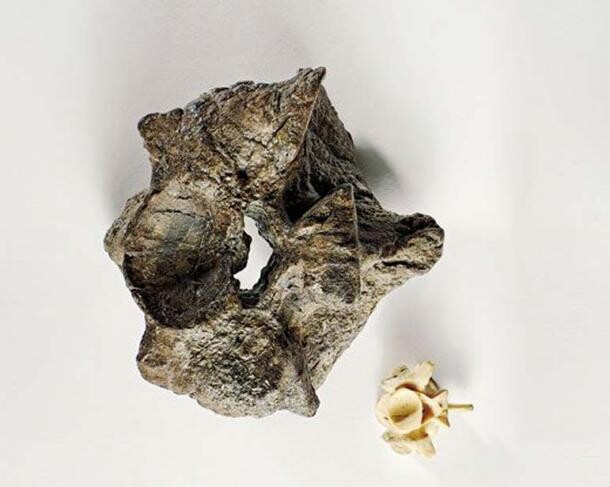
A Titanoboa vertebra dwarfs that of a modern 17-foot anaconda ( Brian Tietz )
It was Wing who realized that Garcia’s fossil was not from a plant. He sent photos of it to another expert, Jonathan Bloch, a paleontologist at the University of Florida. Bloch identified the fossil as part of a jawbone of a land animal.
This was exciting news, as fossils of terrestrial vertebrates from the Paleocene epoch had not been found in that part of South America before then. It was believed that more fossils of such animals were to be found at the site, and this proved to be true.
Identifying the Monster Snake
It was not until 2007, however, that the vertebra of a Titanoboa was identified, when a shipment of fossils labelled ‘crocodile’ was being inspected. When this discovery was made, fresh expeditions were conducted in the hopes of finding more vertebrae of this animal. Eventually, a total of 100 snake vertebrae from 28 animals were collected. With the vertebrae, the paleontologists were able to make estimations as to the size of the prehistoric snake.
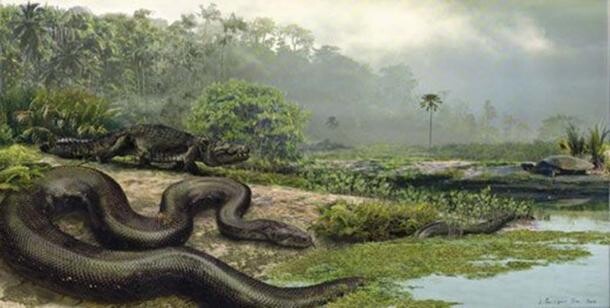
Titanoboa with a dyrosaur and a turtle. ( Jason Bourque/University of Florida )
In 2012, another important discovery about the Titanoboa was made. This time, a snake skull was found. Such a find is extremely rare, as snake skulls are very fragile and usually fall apart after the animal dies.
What Did Titanoboas Eat?
One of the peculiarities of this skull is that it has closely packed teeth, even more than modern day boas. This has led experts to speculate that Titanoboa was a specialized fish-eater. Still, considering its size, Titanoboa could have easily preyed on prehistoric turtles and crocodiles, which lived in the same habitat as this snake.
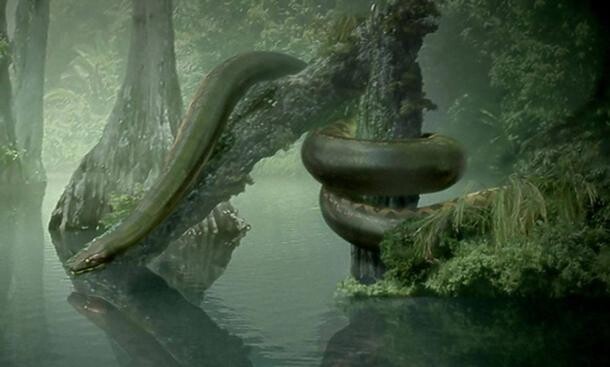
Titanoboa. (darkwaterlilly/ Deviant Art )
These later discoveries prompted the 2012 creation of a life-size model of Titanoboa exhibited in New York City’s Grand Central Terminal to promote the Smithsonian Titanoboa documentary. Some people also believe that Titanoboas still live deep in the Amazon.
Source: kenhthoisu





